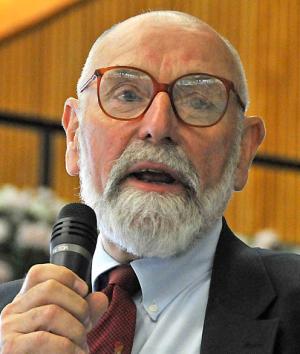In previous issues of the ThoroFan Newsletter, we have discussed the value of the NTRA Safety and Integrity Alliance. It is the only, independent body that sets racetrack standards and undertakes surveys to accredit tracks. The reason for the Alliance was initiated by the horrific accident to Barbaro in the 2006 Preakness Stakes. Other issues around racetrack safety combined to have the NTRA establish the Alliance.
The Alliance has a series of standards which they apply on racetracks that volunteer to undergo the intense survey process. The accreditation includes seven broad categories of standards ranging from Injury and Fatality Reporting and Prevention to Safety and Health of Jockeys and Aftercare. "Safety and Health of Jockeys" includes eleven sub-categories one of which is "Ambulance Support". Although all standards are important the recent mishap at PARX last month highlights the importance of ambulance support.
The 96 hours between March 19
th and the 22
nd were crucial to the life of jockey Jose Flores. From reports it is known that he was in critical care after suffering a catastrophic injury while riding Love Rules in the 9
th race at PARX on the 19
th. Unfortunately, Jose passed away. Some say he could have been saved if he received the appropriate treatment immediately after his fall. Jockey Guild National manager, Terry Meyocks,
Terry Meyocksis quoted in the BloodHorse (3/31/18) " Jockeys are not being well taken care of. The industry needs to do a better job. We need paramedics on track within minutes after a jockey goes down. That's the most important thing."
Studies have shown that time between accident and arrival at the hospital is a critical factor in successful medical care. Although there is not 100% agreement for amount time required for optimal care, it is general assumed to be less than 30 minutes and closer to 15 minutes. Yet faster is always better, but obstacles like weather, distance and traffic can affect travel time.
Clearly, the sooner a skilled emergency personnel can reach the injured person on the track, the better. It is, also, important, what level of training and experience the personnel have. For clarification the entry level of this group is the Emergency Medical Technician (EMT). Depending on the state there may be 2 or 3 levels of EMTs based on training. The top level responder is the Paramedic whose training may consist of between 1200 and 1800 hours. This is exactly the point Mr. Meyocks is making when he addresses the need for paramedics on the track. In the case of jockey Flores, indications from reports are not clear what medical staff were available. Neither the CEO of PARX, Joe Wilson, or the Pennsylvania Bureau of Thoroughbred Horse Racing knew what the medical staff complement on site was, according to the BloodHorse article. Pennsylvania's rule for ambulance staffing is:
" An association shall provide and maintain at least one man-ambulance and at least one horse-ambulance during times horses are permitted to exercise or race. The ambulance shall be equipped, manned, ready for immediate duty and be located at an entrance to the racing strip." [BloodHorse Article]
This rule is a bit soft and does not comply with rule set by the
Association of Racing Commission International (ARCI 007-020 (6) which states, "
An association shall provide a properly equipped to transport ambulance, staffed with at least one certified paramedic during training and two certified paramedics during racing hours". Also, the NTRA Safety and Integrity Alliance offers the same rule in their Code of Standards. Unfortunately, PARX is
not an accredited racetrack and has no obligation to follow the Alliance's standards. If they were, they would have had paramedics available in the ambulance.
Racing fans appreciate the skill and courage of our jockeys. Their jobs, undertaken many times each day, are dangerous. So dangerous that when they ride an ambulance follows them. Yet, what value is it if the ambulance is not staffed with skill medical professionals to help if needed.
Beyond ambulance staffing, the Safety and Integrity Alliance, taken as a whole, assures that our sport is run fairly and evenly. Fans need to know
which tracks are accredited and which ones are not. Our enjoyment of the sport, safety of our athletes, equine and human, and our wagering security can depend on it. To take it one step further, it seems that fans who know which tracks are not accredited should not support these tracks. Soon the message to these tracks will be gotten and hopefully they will seek
NTRA Alliance Accreditation, thereby raising the standard of our sport.
As we look forward to the Triple Crown and the preps that proceed, it is useful to know which tracks voluntarily request accreditation. Gulfstream Park does which hosted the Florida Derby last weekend. Santa Anita, Keeneland and Aqueduct which host the Santa Anita Derby, Blue Grass Stakes and the Wood Memorial, respectively, this weekend are all accredited. It is reassuring to know that Churchill Downs, Pimlico and Belmont Park which host the Triple Crown races are all accredited.
In addition to knowing that a track is accredited or not, it is beneficial for fans to participate in the accreditation process. Although the current rules do not mandate fan participation, the Alliance in the past has invited fans to participate. If the fans voice their concerns to the Safety and Integrity Alliance, we might be invited to participate in the accreditation process at our local tracks. After all, fans know much about the overall track operation that would be useful to the surveyors. The Alliance should use us. But we have to let them know we want to. SPEAK-UP.


